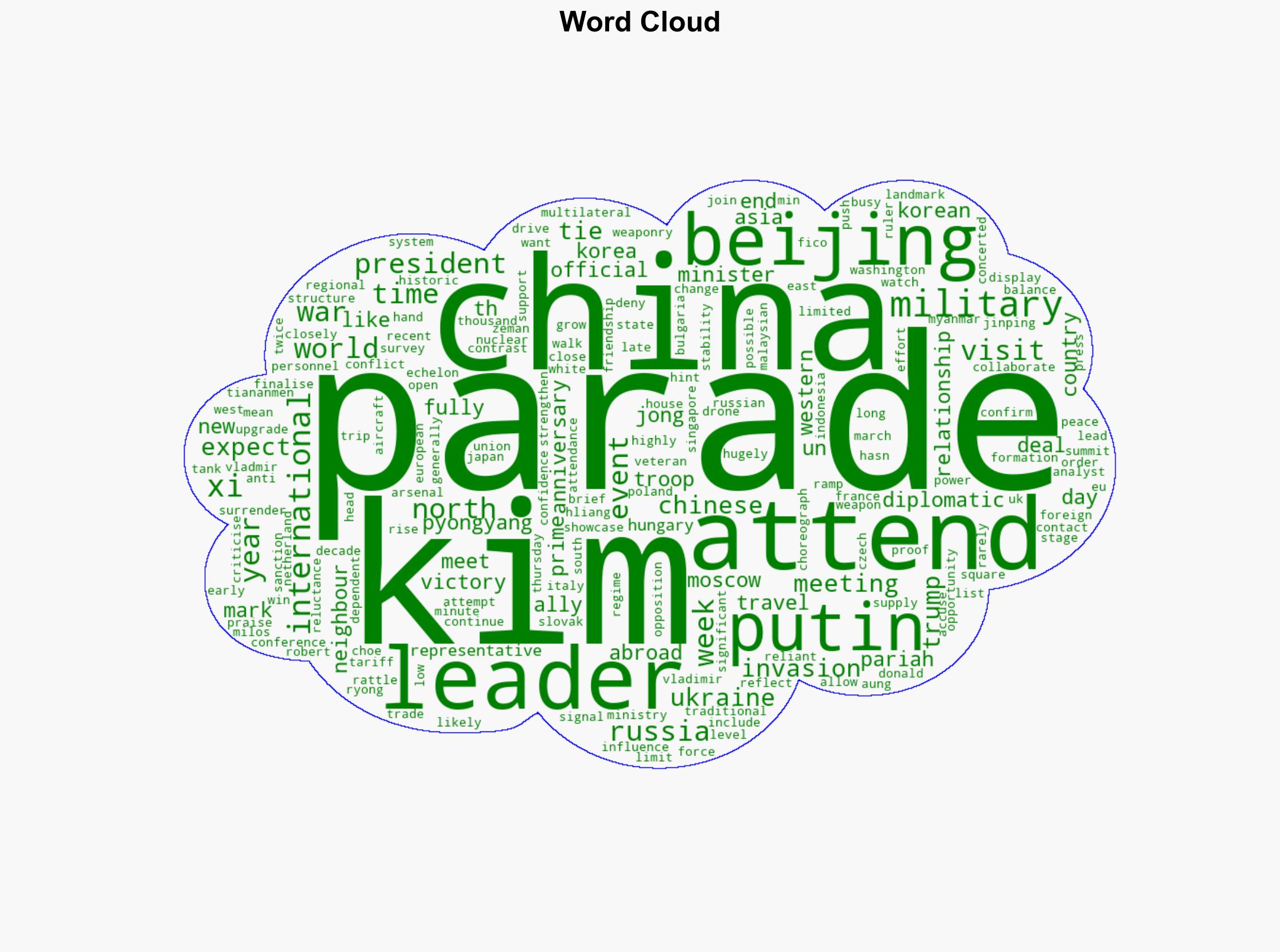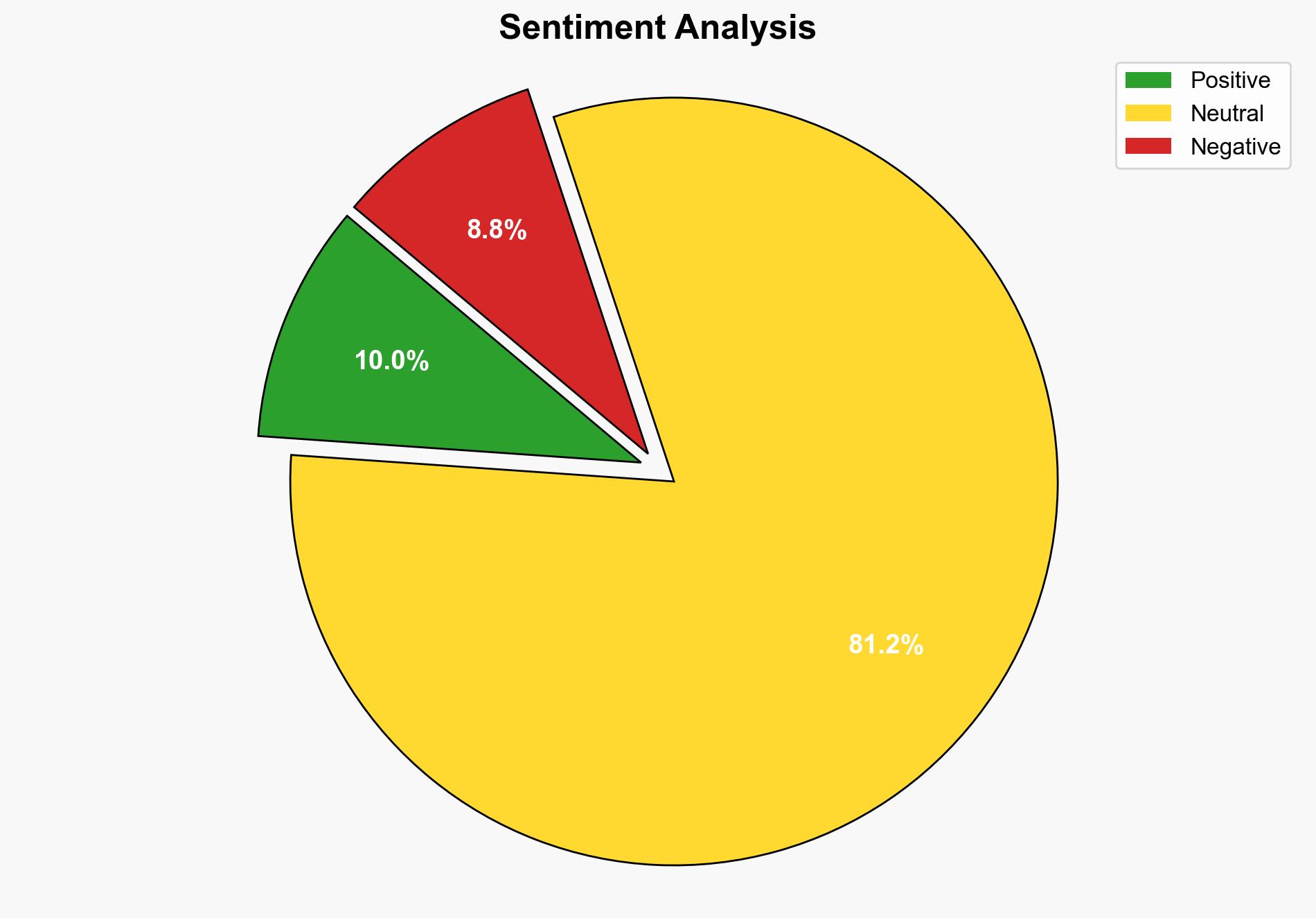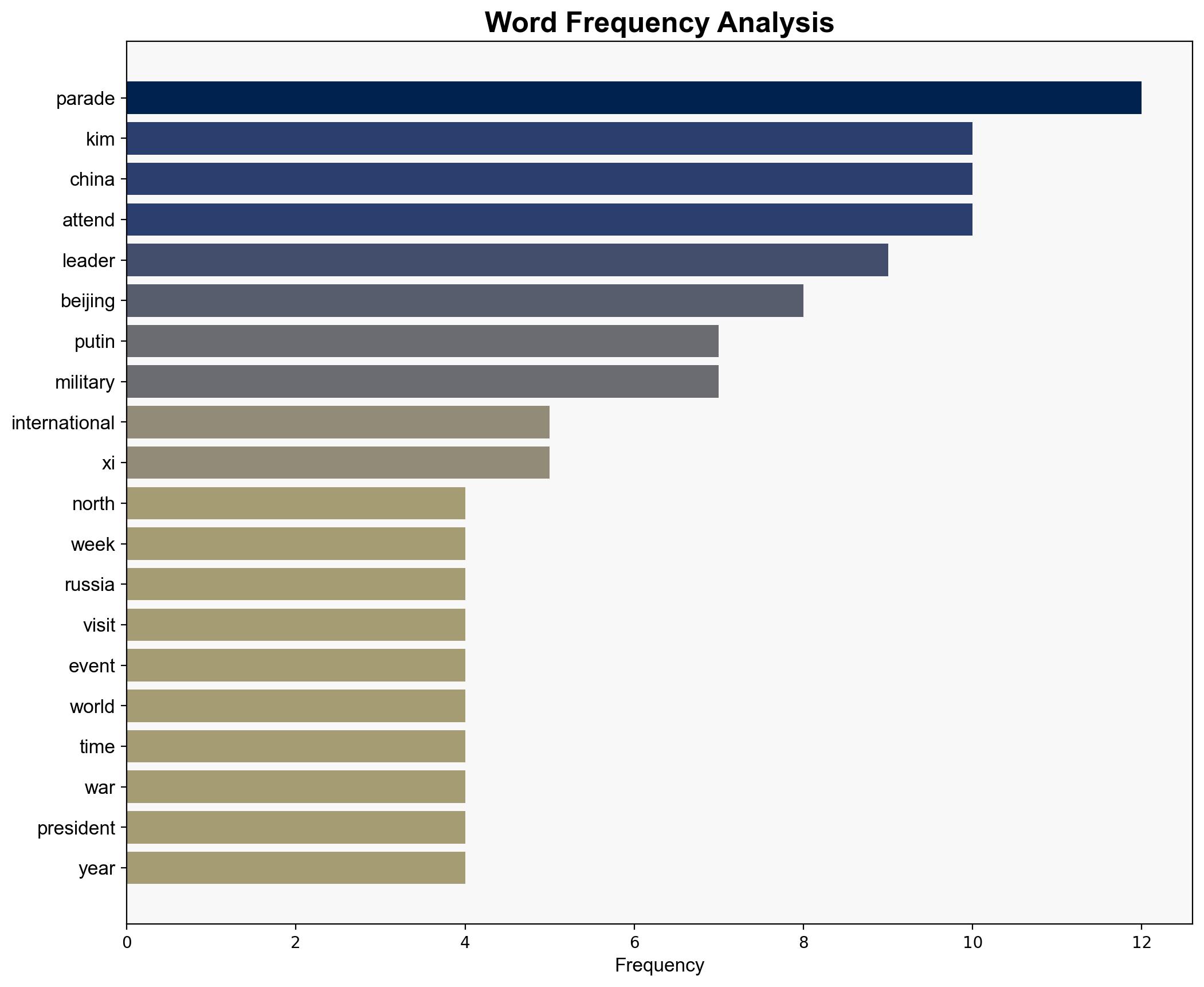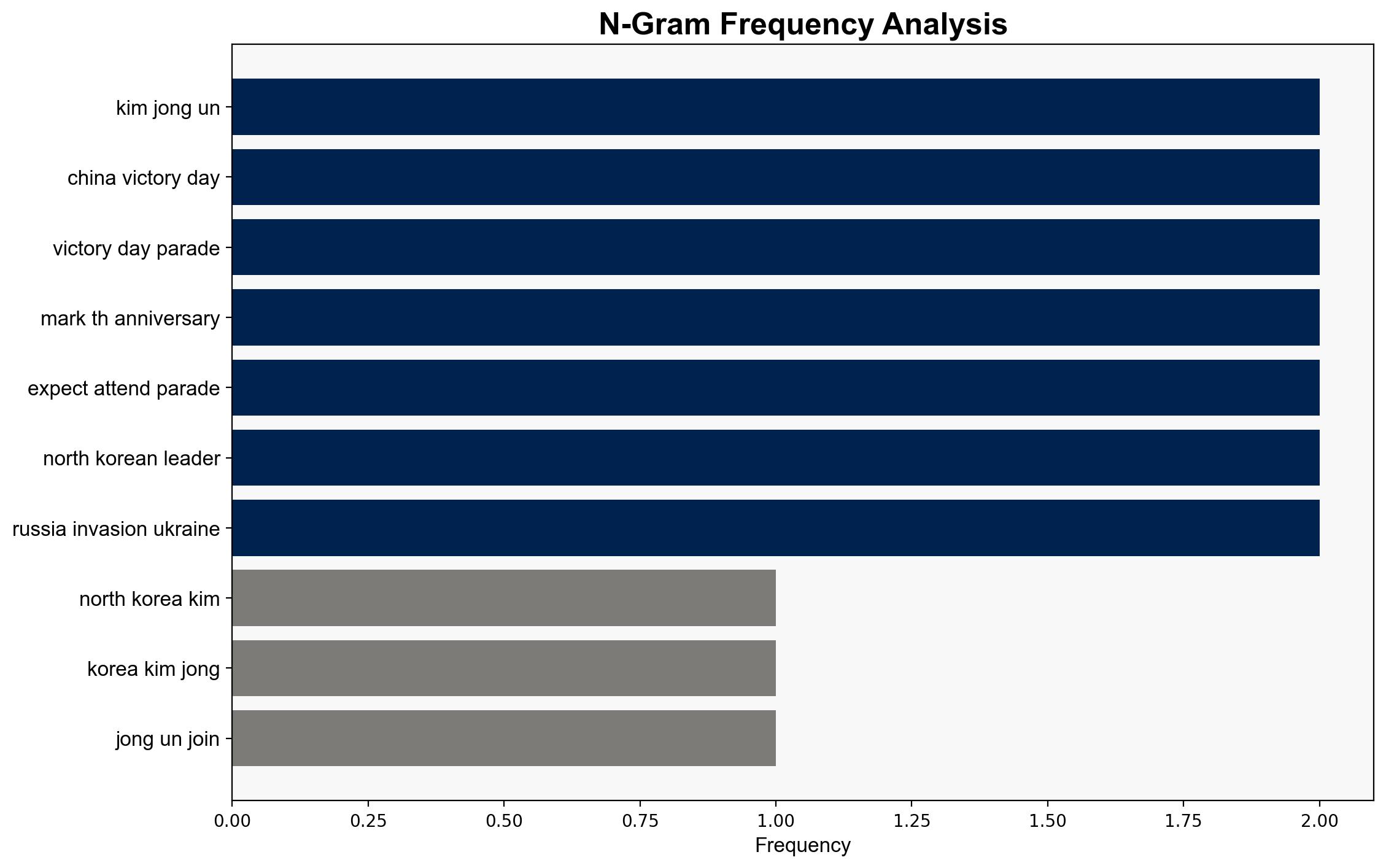North Korea’s Kim Jong Un to attend China military parade – BBC News
Published on: 2025-08-28
Intelligence Report: North Korea’s Kim Jong Un to attend China military parade – BBC News
1. BLUF (Bottom Line Up Front)
The most supported hypothesis is that Kim Jong Un’s attendance at the Chinese military parade signifies a strategic alignment between North Korea, China, and Russia, aiming to counterbalance Western influence and sanctions. Confidence Level: Moderate. Recommended action includes monitoring diplomatic communications and military movements in the region to assess shifts in alliances and potential threats.
2. Competing Hypotheses
1. **Strategic Alignment Hypothesis**: Kim Jong Un’s participation in the parade is a demonstration of strengthened ties between North Korea, China, and Russia, aimed at presenting a united front against Western powers and increasing regional influence.
2. **Diplomatic Diversification Hypothesis**: Kim’s attendance is primarily a diplomatic maneuver to balance North Korea’s relationships with China and Russia, ensuring Pyongyang is not overly reliant on either power while gaining international legitimacy.
Using ACH 2.0, the Strategic Alignment Hypothesis is better supported due to the context of recent geopolitical tensions and the mutual benefits of a trilateral alliance in countering Western sanctions and military presence.
3. Key Assumptions and Red Flags
– **Assumptions**: It is assumed that North Korea seeks to leverage its relationships with China and Russia for economic and military support. Another assumption is that China and Russia are willing to openly support North Korea despite international sanctions.
– **Red Flags**: The lack of explicit statements from Kim Jong Un or North Korean officials on the purpose of the visit could indicate strategic ambiguity. The absence of Western leaders at the parade highlights potential diplomatic isolation.
4. Implications and Strategic Risks
– **Geopolitical Risks**: Strengthened ties between North Korea, China, and Russia may lead to increased military cooperation and a more assertive stance in regional disputes, potentially escalating tensions with the West.
– **Economic Risks**: Enhanced collaboration could undermine international sanctions, allowing North Korea to access resources and technology, complicating efforts to curb its nuclear program.
– **Psychological Risks**: The parade serves as a propaganda tool, bolstering domestic support for the regimes involved and potentially emboldening them to pursue aggressive policies.
5. Recommendations and Outlook
- Enhance intelligence gathering on military and diplomatic activities in the region to anticipate shifts in alliances.
- Engage in diplomatic efforts to reaffirm alliances with regional partners and deter aggressive actions by the trilateral bloc.
- Scenario Projections:
- **Best Case**: Diplomatic engagement leads to de-escalation and renewed dialogue on denuclearization.
- **Worst Case**: Increased military cooperation results in regional conflicts and heightened global tensions.
- **Most Likely**: Continued strategic posturing with sporadic diplomatic engagements to manage tensions.
6. Key Individuals and Entities
– Kim Jong Un
– Xi Jinping
– Vladimir Putin
– Donald Trump
7. Thematic Tags
national security threats, geopolitical alliances, regional power dynamics, military cooperation




